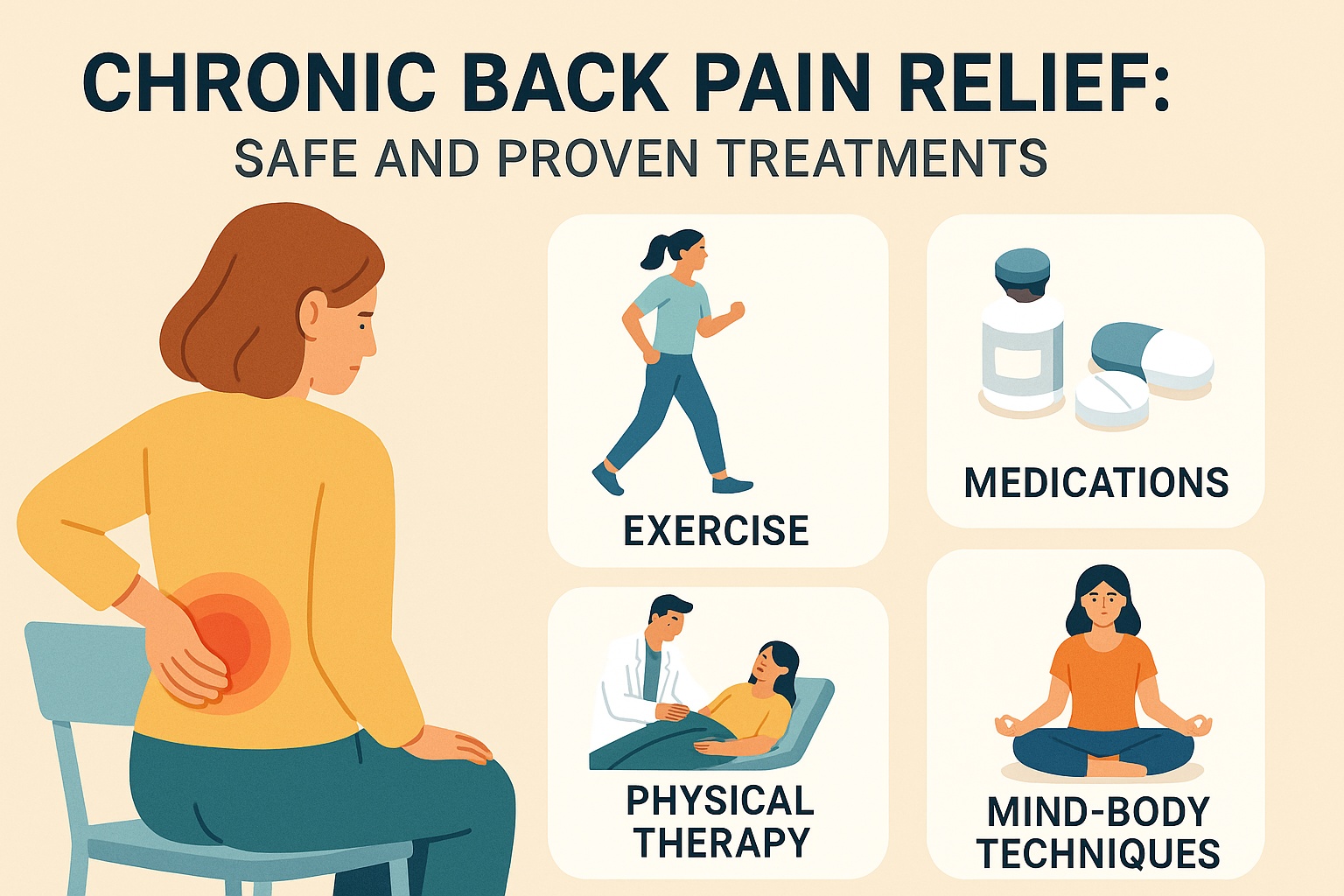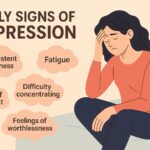Chronic Back Pain Relief: Safe Options That Work
Chronic back pain relief is one of the most searched health topics in the United States. Millions of Americans suffer from ongoing back pain that interferes with work, sleep, and daily life. While surgery and opioids might come to mind, there are safer, more sustainable treatment options available. In this guide, you’ll discover evidence-based ways to relieve chronic back pain without harsh side effects or risky interventions.
What Is Chronic Back Pain?
Chronic back pain refers to pain that persists for 12 weeks or longer—even after an initial injury or underlying cause has been treated. It may be constant or come and go. Common causes include:
- Herniated or bulging discs
- Degenerative disc disease
- Spinal stenosis
- Arthritis or joint inflammation
- Muscle strain or ligament damage
- Poor posture or sedentary lifestyle
When to Seek Medical Help
If your back pain lasts longer than a few weeks, limits your mobility, or is accompanied by numbness or tingling, consult a healthcare provider. Early diagnosis leads to better outcomes and faster chronic back pain relief.
Top Safe Chronic Back Pain Relief Methods
Let’s explore safe and effective treatment options recommended by doctors and pain specialists in 2025:
- Physical therapy — A tailored program improves flexibility, posture, and core strength. Therapists guide you through specific stretches and exercises designed for long-term relief.
- Chiropractic care — Manual spinal manipulation can provide short-term relief and improve spinal alignment for some patients.
- Massage therapy — Reduces muscle tension and improves circulation, which can ease pain and stiffness.
- Acupuncture — Backed by clinical studies, acupuncture may help reduce inflammation and improve nerve function.
- Mind-body techniques — Yoga, tai chi, and meditation address both the physical and psychological aspects of chronic pain.
- Heat and cold therapy — Alternating between hot and cold compresses can reduce inflammation and relax tense muscles.
Non-Invasive Medical Treatments
If natural approaches aren’t enough, several safe medical options exist for chronic back pain relief:
- NSAIDs — Over-the-counter anti-inflammatory drugs like ibuprofen or naproxen can help manage flare-ups.
- Topical pain relievers — Creams and patches deliver localized relief without systemic side effects.
- TENS units — Transcutaneous electrical nerve stimulation devices deliver low-voltage currents to block pain signals.
- Muscle relaxants — Used short-term under medical supervision to break pain cycles.
When Injections Are Appropriate
For moderate to severe pain, your doctor might recommend:
- Epidural steroid injections — Reduce inflammation around spinal nerves.
- Facet joint injections — Target specific joints causing discomfort.
- Trigger point injections — Relieve muscle knots and referred pain.
These are minimally invasive and can provide relief lasting weeks to months, allowing time to engage in physical rehab.
Lifestyle Changes That Support Pain Relief
Long-term chronic back pain relief often depends on what you do daily. Habits that help include:
- Maintaining a healthy weight to reduce pressure on the spine
- Practicing good posture, especially while working at a desk
- Staying active—light walking or swimming can maintain mobility
- Improving sleep quality with supportive mattresses and sleep positions
- Limiting screen time and sitting breaks with regular stretching
Are Surgery and Opioids Ever Necessary?
Surgery should be the last resort. It may be considered for serious conditions like spinal fractures, tumors, or nerve compression that don’t improve with conservative treatment. Opioids, while sometimes prescribed, carry risks of addiction and should only be used short-term under close supervision.
FAQs About Chronic Back Pain Relief
- Is it safe to exercise with chronic back pain?
Yes, but it’s important to choose low-impact activities and follow professional guidance to avoid injury. - How long does it take to see results from physical therapy?
Many patients experience noticeable improvements within 4–6 weeks of consistent treatment. - Can stress make chronic back pain worse?
Absolutely. Stress tightens muscles and heightens pain perception. Mind-body techniques can help.
Conclusion: Safe Chronic Back Pain Relief Is Within Reach
You don’t have to live in constant discomfort. With the right combination of physical therapy, non-invasive treatments, and lifestyle adjustments, chronic back pain relief is possible—without relying on surgery or risky medications. Consult a specialist, stay proactive, and give your body the support it needs to heal and move freely again.



